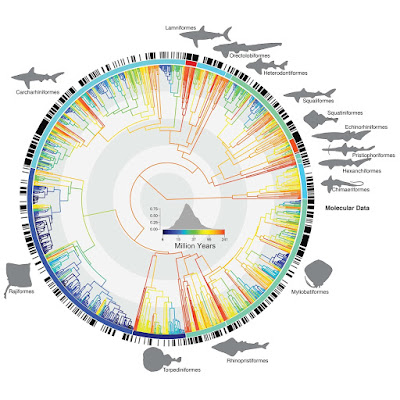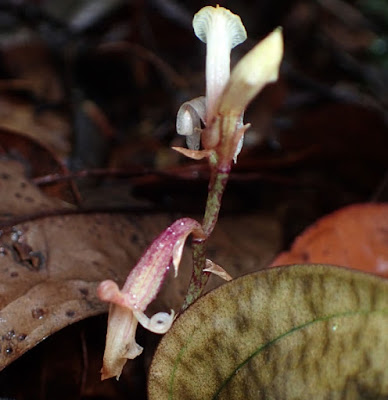[Most Recent Entries] [Calendar View]
Saturday, January 27th, 2018
| Time | Event | ||
| 12:22a | [Ichthyology • 2018] Conserving the Evolutionary History of Sharks, Rays and Chimaeras (Chondrichthyes)
Abstract In an era of accelerated biodiversity loss and limited conservation resources, systematic prioritization of species and places is essential. In terrestrial vertebrates, evolutionary distinctness has been used to identify species and locations that embody the greatest share of evolutionary history. We estimate evolutionary distinctness for a large marine vertebrate radiation on a dated taxon-complete tree for all 1,192 chondrichthyan fishes (sharks, rays and chimaeras) by augmenting a new 610-species molecular phylogeny using taxonomic constraints. Chondrichthyans are by far the most evolutionarily distinct of all major radiations of jawed vertebrates—the average species embodies 26 million years of unique evolutionary history. With this metric, we identify 21 countries with the highest richness, endemism and evolutionary distinctness of threatened species as targets for conservation prioritization. On average, threatened chondrichthyans are more evolutionarily distinct—further motivating improved conservation, fisheries management and trade regulation to avoid significant pruning of the chondrichthyan tree of life. R. William Stein, Christopher G. Mull, Tyler S. Kuhn, Neil C. Aschliman, Lindsay N. K. Davidson, Jeffrey B. Joy, Gordon J. Smith, Nicholas K. Dulvy and Arne O. Mooers. 2018. Global Priorities for Conserving the Evolutionary History of Sharks, Rays and Chimaeras. Nature Ecology & Evolution. 2; 288–298. DOI: 10.1038/s41559-017-0448-4 Saving sharks with trees: researchers aim to save key branches of shark and ray tree of life phy.so/436013572 @physorg_com | ||
| 12:26a | [Botany • 2018] Nephelaphyllum maliauensis • A New Species (Orchidaceae; Collabiinae) from the Maliau Basin, Sabah, Borneo, with A Discussion of the Taxonomic Identities of N. pulchrum, N. latilabre and N. flabellatum
Nephelaphyllum is a relatively small genus, containing only 11 species distributed from China through Indochina to Thailand and from Peninsular Malaysia eastwards through Indonesia to the Philippines (Chan et al. 1994). The species are easily recognised, even when not in flower, by their characteristic light green or yellowish leaves and dark green venation and blotches (Comber 1990). All species grow in deep, well-drained humus in dark conditions on the forest floor, especially in areas without severe dry seasons (Comber 1990). Keywords: Orchidaceae, Collabiinae, Monocots Nephelaphyllum maliauensis Suetsugu, M.Suleiman & Tsukaya, sp. nov. Kenji Suetsugu, Monica Suleiman and Hirokazu Tsukaya. 2018. Nephelaphyllum maliauensis (Orchidaceae; Collabiinae), A New Species from the Maliau Basin, Sabah, Borneo, with A Discussion of the Taxonomic Identities of N. pulchrum, N. latilabre and N. flabellatum. Phytotaxa. 336(1); 89–94. DOI: 10.11646/phytotaxa.336.1.7 |
| << Previous Day |
2018/01/27 [Calendar] |
Next Day >> |



